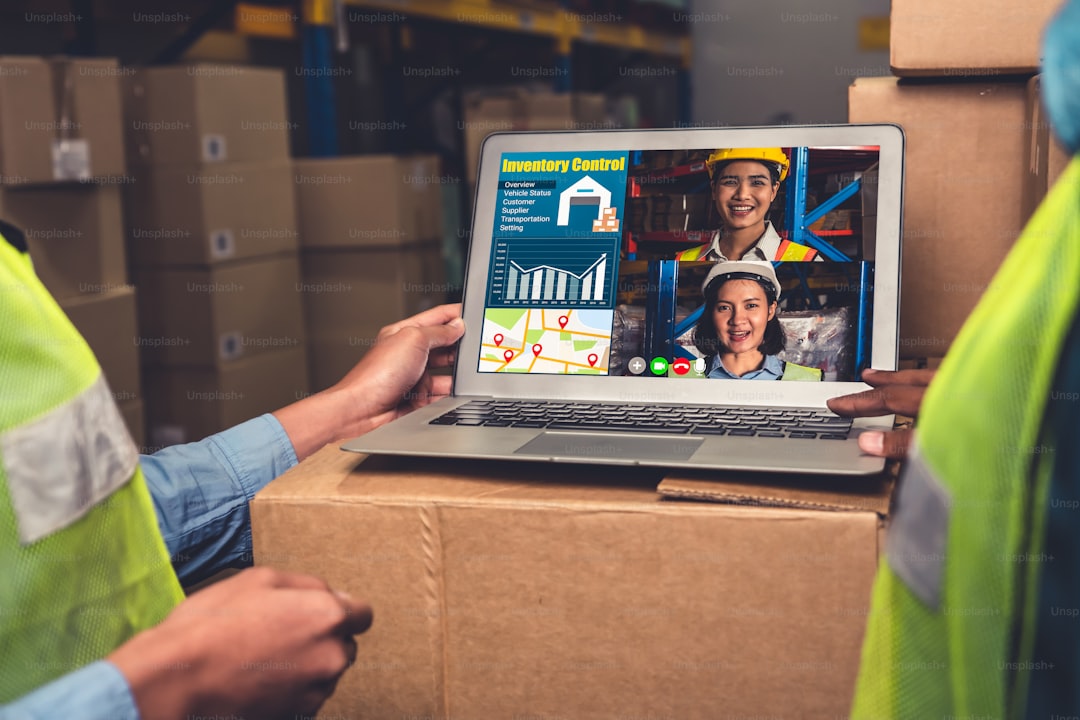Boost Your Remote Productivity with the Best Cafes and Flexible Workspaces

Introduction
Remote work has moved from a niche perk to a mainstream reality for millions of professionals. The freedom to choose where you work is both a blessing and a challenge. While a home office can be comfortable, it can also feel isolating, noisy, or filled with distractions. Many remote workers discover that a change of scenery – a bustling café or a purpose‑built flexible workspace – can revive focus, spark creativity, and boost overall productivity.
In this article we explore how to identify and make the most of the best cafés and flexible workspaces for remote work. We cover essential criteria such as Wi‑Fi reliability, power availability, ergonomics, and atmosphere. We also provide curated lists of standout locations in major cities around the world, practical tips for staying productive, and guidance on budgeting and safety. Whether you are a digital nomad hopping between continents or a freelancer who works from a nearby coffee shop a few times a week, the strategies here will help you turn any public space into a high‑performance office.
Why Cafés and Flexible Workspaces Can Enhance Productivity
Natural Variation Stimulates the Brain
Research shows that working in the same environment day after day can lead to mental fatigue and reduced creative output. A new backdrop introduces subtle sensory changes – different lighting, ambient sounds, and visual cues – that keep the brain alert. Cafés and coworking hubs provide this variation without the logistical overhead of moving to a completely new city.
Built‑In Social Energy
Even when you are focused on solo tasks, being around other people who are working can create a “social facilitation” effect. The quiet hum of conversation, the occasional clink of coffee cups, and the sight of others typing can reinforce a work mindset. This is especially helpful for remote workers who miss the collective momentum of a traditional office.
Access to Amenities Not Usually Found at Home
Many cafés offer high‑quality coffee, snacks, and comfortable seating that can make long work sessions more pleasant. Flexible workspaces often include meeting rooms, printers, standing desks, and phone booths – resources that are expensive or impractical to set up at home.
Clear Boundaries Between Work and Leisure
When you step out of your living space to work, you create a physical boundary that signals the start and end of the workday. This helps prevent the blur between personal and professional time that often leads to burnout.
Core Criteria for Selecting an Ideal Café or Flexible Workspace
Before you settle on a spot, evaluate it against the following essential factors. Each factor can be rated on a simple three‑point scale: Excellent, Good, Fair, or Poor. Choose locations that consistently score Excellent or Good in the areas most important to you.
Wi‑Fi Speed and Stability
A fast, reliable internet connection is non‑negotiable for remote work. Use a speed‑test app to check download and upload rates. Look for cafés that advertise at least 15 Mbps download speed for multiple users. Flexible workspaces often provide enterprise‑grade connections with dedicated bandwidth.
Power Outlet Availability
Even the most reliable Wi‑Fi is useless if your laptop dies. Observe how many outlets are accessible at each table or desk. Some cafés install power strips under tables; coworking spaces typically offer abundant plug‑in points at each workstation.
Seating Comfort and Ergonomics
Long hours demand chairs that support the lower back and desks at a comfortable height. Cafés may have plush armchairs or communal tables; flexible workspaces usually provide adjustable chairs and standing desks. If ergonomics are a priority, favor locations that allow you to set up a laptop stand and external keyboard.
Noise Level
Noise tolerance varies from person to person. Cafés can range from whisper‑quiet book‑shop vibes to lively brunch crowds. Flexible workspaces often have designated quiet zones, phone booths, and collaborative areas. If you need focus, seek out spots with low ambient noise or bring noise‑cancelling headphones.
Lighting
Natural light improves mood and reduces eye strain. Choose cafés with large windows or flexible workspaces with adjustable LED lighting. Avoid dimly lit environments that force you to squint at the screen.
Food and Beverage Options
A steady supply of coffee, tea, and healthy snacks can sustain energy levels. Some cafés provide free refills for a purchase; many coworking spaces have on‑site cafés or vending machines. Consider dietary preferences and the cost of consumables.
Community and Networking Opportunities
If you enjoy meeting other professionals, look for spaces that host events, workshops, or informal meet‑ups. Coworking hubs often publish calendars of community activities. Cafés with a regular “remote work” crowd can also become informal networking circles.
Safety and Hygiene
Especially in the post‑pandemic world, cleanliness matters. Check that the venue follows rigorous cleaning protocols, offers hand sanitizer stations, and maintains well‑ventilated areas. Flexible workspaces often have dedicated cleaning staff and contact‑less entry systems.
Pricing and Membership Models
Cafés usually charge per drink or offer a “day pass” for unlimited Wi‑Fi. Coworking spaces can be pay‑as‑you‑go, daily, weekly, or monthly memberships. Compare the cost per hour of productive work against your budget.
Spotlight on Top Cafés for Remote Work
Below is a curated selection of cafés that consistently meet the criteria above. Each entry includes a brief description, key strengths, and practical tips for remote workers.
The Roasted Bean – Portland, Oregon
Located in the Pearl District, The Roasted Bean blends industrial chic with a warm, community‑focused atmosphere. The café offers free high‑speed Wi‑Fi (average 30 Mbps), plenty of power strips, and a variety of seating options ranging from bar‑height stools to plush sofas.
Strengths
- Large windows that flood the space with natural light.
- Quiet mornings (8 am–11 am) ideal for deep work.
- Friendly baristas who remember regular customers.
Tips
- Purchase a coffee to support the staff; a $4 latte grants you an hour of free Wi‑Fi.
- Arrive early on weekdays to claim a table near a power outlet.
Café du Soleil – Paris, France
Tucked away on Rue de la Montagne, Café du Soleil is a sun‑lit Parisian gem with a reputation for artisanal pastries and reliable internet. The café provides a dedicated “working zone” with ergonomic chairs and a communal table.
Strengths
- 25 Mbps Wi‑Fi with a stable connection even during peak tourist hours.
- Fresh croissants and organic coffee sourced from local roasters.
- Soft background music that enhances concentration.
Tips
- Use the café’s free printing service (up to 10 pages per day).
- Take advantage of the outdoor terrace in the summer for a change of scenery.
Brew Lab – Melbourne, Australia
Brew Lab is a modern café located in the vibrant Fitzroy neighborhood. It combines a minimalist design with a strong focus on technology. The space includes a “tech corner” equipped with USB‑C and Lightning charging stations.
Strengths
- High‑speed Wi‑Fi (up to 50 Mbps) with a dedicated router for workstations.
- Adjustable standing desks for those who prefer to alternate between sitting and standing.
- Regular “tech talks” on Tuesday evenings that foster community learning.
Tips
- Sign up for the Brew Lab loyalty app to earn free drinks after ten purchases.
- Reserve a standing desk during peak hours via the café’s online booking system.
The Greenhouse – Vancouver, Canada
Set inside a repurposed greenhouse, this café offers a lush, plant‑filled environment that boosts creativity. Large skylights provide ample daylight, and the indoor garden creates a calming ambiance.
Strengths
- Reliable Wi‑Fi (average 20 Mbps) and abundant power outlets on each table.
- Healthy menu featuring smoothie bowls, avocado toast, and fair‑trade coffee.
- Quiet afternoons (2 pm–5 pm) when the space is less crowded.
Tips
- Bring a reusable water bottle; the café offers filtered water refills.
- Use the “focus pods” – small glass enclosures – for phone calls or video meetings.
Café Lumen – Tokyo, Japan
Café Lumen occupies a sleek, multi‑level space in Shibuya. It is renowned for its minimalist aesthetic, ergonomic furniture, and attention to detail. The café provides a “quiet floor” where conversation is limited to whispers.
Strengths
- Ultra‑fast fiber internet (up to 100 Mbps) suitable for large file transfers.
- Adjustable monitor stands and keyboard trays at each workstation.
- On‑site vending machines with a variety of Japanese snacks and drinks.
Tips
- Purchase a “work pass” for ¥1,000 to unlock unlimited Wi‑Fi and power usage for the day.
- Respect the quiet floor policy to maintain a productive atmosphere for all.
The Daily Grind – New York City, USA
Located in the heart of SoHo, The Daily Grind is a bustling café with a strong remote‑work culture. It offers a mix of communal tables and private booths, catering to both collaborative and solo work styles.
Strengths
- Consistent Wi‑Fi speeds of 35 Mbps even during lunch rush.
- Free coffee refills for customers who purchase a pastry.
- Dedicated “focus rooms” that can be booked for video calls.
Tips
- Use the app to reserve a focus room in advance; the fee is $5 per hour.
- Arrive early on Mondays to secure a spot near a power outlet.
Hub Café – Berlin, Germany
Hub Café merges a coworking vibe with a café setting. The space includes a flexible layout of modular furniture that can be reconfigured for group work or individual tasks.
Strengths
- Dual‑band Wi‑Fi with separate guest and work networks.
- Ergonomic chairs with lumbar support and height‑adjustable tables.
- Monthly “skill‑share” evenings where members present on various topics.
Tips
- Sign up for the “monthly pass” (€45) to get unlimited Wi‑Fi and a complimentary coffee each day.
- Take advantage of the “quiet zone” on the mezzanine level for deep work.
The Coffee Loft – Cape Town, South Africa
Perched on the 12th floor of a historic building, The Coffee Loft offers panoramic views of Table Mountain alongside a comfortable working environment.
Strengths
- Stable Wi‑Fi (average 28 Mbps) with backup satellite connection for redundancy.
- Outdoor balcony with tables and power outlets for those who enjoy fresh air.
- Locally roasted coffee and a menu featuring South African specialties.
Tips
- Bring a portable Wi‑Fi dongle as a backup in case of connectivity hiccups.
- Use the balcony during early mornings to catch sunrise while working.
Leading Flexible Workspaces for Remote Professionals
While cafés provide a casual setting, flexible workspaces (often called coworking spaces) deliver a more structured environment with dedicated amenities. Below are standout locations that cater to a range of needs – from solo freelancers to growing teams.
WeWork – Global Network
WeWork remains the most recognizable coworking brand, offering locations in over 30 countries. Each space features high‑speed internet, meeting rooms, phone booths, and community events.
Key Features
- Unlimited Wi‑Fi with enterprise‑grade security.
- Access to a global network of locations with a single membership.
- On‑site staff to assist with IT issues, printing, and mail handling.
Ideal For
- Professionals who travel frequently and need consistent workspace standards.
The Office – London, United Kingdom
The Office is a boutique coworking hub located in Shoreditch. It emphasizes design, wellness, and community.
Key Features
- Adjustable standing desks and ergonomic chairs in every zone.
- Dedicated quiet rooms for focused work and meditation pods.
- Weekly networking breakfasts and skill‑share workshops.
Ideal For
- Creatives and entrepreneurs seeking a stylish environment with strong community ties.
Impact Hub – Worldwide
Impact Hub is a socially‑focused coworking network that supports startups, NGOs, and purpose‑driven businesses.
Key Features
- Access to impact‑focused mentorship programs and funding opportunities.
- Collaborative spaces designed for brainstorming and workshops.
- Sustainability initiatives such as zero‑waste policies and renewable energy usage.
Ideal For
- Mission‑driven professionals who want to align work environment with values.
Mindspace – Europe and the United States
Mindspace combines premium interior design with a strong emphasis on member experience.
Key Features
- Boutique‑style lounges, event spaces, and rooftop terraces.
- 24/7 access for members, allowing flexible work hours.
- Concierge services for travel, dining, and office supplies.
Ideal For
- Professionals who appreciate high‑end aesthetics and concierge support.
The Farm – Austin, Texas
The Farm is a hybrid coworking and community garden space. It encourages members to step outside for breaks and integrates sustainability into daily operations.
Key Features
- On‑site garden where members can pick fresh herbs for meals.
- Solar‑powered facilities and a composting program.
- Large open‑plan areas with natural wood furnishings.
Ideal For
- Remote workers who value a connection to nature and eco‑friendly practices.
Talent Garden – Italy and Europe
Talent Garden focuses on technology and innovation, offering accelerator programs and tech‑focused events.
Key Features
- High‑speed internet with dedicated bandwidth for developers.
- Access to 3D printers, VR labs, and hardware prototyping tools.
- Partnerships with universities and research institutes.
Ideal For
- Tech professionals, developers, and startups needing advanced resources.
Regus – Worldwide
Regus provides flexible office solutions ranging from private offices to shared coworking areas. It is known for its extensive global presence and professional atmosphere.
Key Features
- Professional reception services and mail handling.
- Meeting rooms equipped with video‑conference technology.
- Flexible contracts from hourly to annual plans.
Ideal For
- Companies requiring a formal office setting without long‑term leases.
Technology and Connectivity Essentials
Even the best venue cannot compensate for inadequate equipment. Below is a checklist of tools and accessories that will help you stay productive in any café or flexible workspace.
Reliable Laptop or Tablet
Choose a device with at least 8 GB of RAM and a solid‑state drive for fast boot times. If you frequently join video calls, a built‑in HD webcam and quality microphone are essential.
Portable Power Solutions
- Power Strip with Surge Protection – Allows you to plug multiple devices safely.
- USB‑C Power Bank – Provides backup power for smartphones and tablets.
- Laptop Sleeve with Integrated Battery – Extends laptop runtime by several hours.
Noise‑Cancelling Headphones
Active‑noise‑cancelling headphones block ambient sound, making it easier to concentrate or join calls without background interference.
External Keyboard and Mouse
A compact mechanical keyboard and ergonomic mouse improve typing speed and reduce strain, especially when using a laptop on a café table.
Monitor Stand or Laptop Riser
Elevating the screen to eye level promotes better posture. Portable aluminum risers are lightweight and travel‑friendly.
VPN (Virtual Private Network)
When using public Wi‑Fi, a VPN encrypts your connection and protects sensitive data. Choose a reputable provider with a no‑logs policy.
Cloud Storage and Collaboration Tools
- Google Drive / Dropbox – For file syncing and sharing.
- Notion / Evernote – For note‑taking and project organization.
- Slack / Microsoft Teams – For communication with teammates.
Mobile Hotspot (Optional)
Having a personal cellular hotspot as a backup can be a lifesaver if the venue’s Wi‑Fi fails. Ensure your data plan offers sufficient bandwidth for video conferencing.
Strategies to Maximize Productivity in Public Workspaces
Even with the perfect venue and gear, habits play a crucial role in how effectively you work. Below are proven strategies to help you stay focused and efficient.
Set Clear Goals Before You Arrive
Spend a few minutes the night before outlining the tasks you intend to complete. Use a task manager or simple bullet list. Knowing exactly what you need to achieve reduces decision fatigue and keeps you on track.
Follow the “Two‑Hour Block” Technique
Work in focused blocks of two hours followed by a 15‑minute break. During the block, eliminate distractions by turning off non‑essential notifications and using a website blocker if needed. The short break allows you to stretch, hydrate, and refresh your mind.
Leverage Ambient Noise
If you find complete silence uncomfortable, use ambient sound apps (such as coffee shop or nature sounds) to create a consistent auditory backdrop. This can help mask unpredictable noises in the environment.
Optimize Seating Position
Sit with your back against a solid surface to reduce fatigue. Position your screen at eye level and keep elbows at a 90‑degree angle. If the venue lacks ergonomic chairs, bring a portable lumbar support pillow.
Use the “Pomodoro” Method for Short Tasks
For quick, repetitive tasks, set a timer for 25 minutes of work followed by a five‑minute break. After four cycles, take a longer break of 15–30 minutes. This rhythm maintains momentum without overwhelming you.
Schedule Collaborative Activities Wisely
If you need to meet with teammates, book a meeting room or quiet booth in advance. Reserve noisy areas for solo deep‑work sessions. Communicate your schedule to colleagues so they know when you are available for collaboration.
Keep a “Workspace Kit” Ready
Maintain a small bag with essentials: charger, headphones, notebook, pens, a reusable coffee cup, and a snack bar. Having these items on hand prevents last‑minute trips to the counter and keeps you focused.
Manage Coffee Consumption
While caffeine can boost alertness, excessive intake leads to crashes. Limit coffee to one or two cups per day and balance with water. Use the café’s refill policy wisely to stay hydrated.
Protect Your Data
Always lock your screen when stepping away, even for a short moment. Store sensitive documents in encrypted cloud folders and avoid saving passwords in browsers when working on public computers.
Balancing Work and Well‑Being in Public Settings
A productive day is not just about ticking off tasks; it also involves taking care of your physical and mental health.
Incorporate Micro‑Movements
Every hour, stand up, stretch, or walk to the restroom. Use the venue’s layout to your advantage – take a short walk to the counter, or step outside for fresh air.
Practice Mindful Breathing
If you feel stressed, pause for a few deep breaths. Inhale for four counts, hold for four, exhale for six. This simple technique reduces anxiety and improves focus.
Use Natural Light Strategically
Sit near windows when possible. Natural light regulates circadian rhythms, which can boost mood and productivity. If you work late, consider a desk lamp with a warm hue to avoid disrupting sleep patterns.
Take Purposeful Breaks
Instead of scrolling social media, use breaks to read a few pages of a book, meditate, or journal. This refreshes the mind and prevents burnout.
Set a Clear End‑of‑Day Routine
When you finish your last task, close all tabs, pack your workspace kit, and mentally transition out of work mode. Some remote workers find it helpful to write a brief “shutdown” note summarizing accomplishments and pending items for the next day.
Budgeting for Cafés and Flexible Workspaces
Financial considerations are an important part of the remote‑work equation. Below are tips to keep expenses under control while still accessing high‑quality work environments.
Track Daily Spending
Maintain a simple spreadsheet that records the amount spent on coffee, meals, and workspace fees. Reviewing this weekly reveals patterns and helps you adjust habits.
Leverage Loyalty Programs
Many cafés offer loyalty cards that reward frequent visitors with free drinks after a certain number of purchases. Sign up for these programs to offset costs.
Choose Day Passes Over Full Memberships When Appropriate
If you only need a workspace a few times a month, a day pass or “pay‑as‑you‑go” option may be more economical than a monthly membership. Compare the per‑hour cost before committing.
Share Memberships
Some coworking spaces allow multiple users under a single corporate or team plan. If you work with a partner or small team, consider a shared membership to split the cost.
Take Advantage of Free Trial Periods
Many flexible workspaces offer a free day or week for new members. Use these trials to test the environment before signing a contract.
Use Tax Deductions
Depending on your jurisdiction, expenses related to remote work (such as coworking fees, internet costs, and even a portion of meals) may be tax‑deductible. Consult a tax professional to understand eligible deductions.
Safety and Hygiene Best Practices
Public workspaces can pose health risks if proper precautions are not taken. Follow these guidelines to protect yourself and others.
Hand Hygiene
Carry a small bottle of hand sanitizer and use it before handling food, after touching shared surfaces, and after using the restroom.
Clean Your Workspace
Bring disinfectant wipes to clean your laptop keyboard, mouse, and any personal items you place on tables. Some cafés provide wipes, but it is good to be prepared.
Wear a Mask When Needed
If you are feeling unwell or if the venue is crowded, wearing a mask can reduce the spread of airborne germs.
Choose Well‑Ventilated Areas
Sit near windows or in spaces with good airflow. Avoid cramped corners with limited ventilation.
Keep Personal Items Secure
Use a lockable bag or a small safe (if the venue provides one) to store valuables while you focus on work.
Adapting to Different Cities and Cultures
When traveling, the expectations around cafés and coworking spaces can vary widely. Here are some cultural tips to ensure a smooth experience.
Respect Local Etiquette
In some countries, lingering for hours with just a coffee purchase may be frowned upon. In others, it is perfectly acceptable. Observe how locals behave and adjust accordingly.
Be Mindful of Noise Levels
In many Asian cafés, speaking loudly on a phone is considered impolite. Use a quiet voice or step outside for calls.
Understand Pricing Structures
Some European cafés charge a flat fee for Wi‑Fi access, while others offer it for free with a purchase. Check signage or ask staff before settling in.
Language Barriers
Learn a few basic phrases in the local language, such as “Do you have power outlets?” or “Can I use the Wi‑Fi?” This can make interactions smoother.
Local Payment Methods
Many cafés and coworking spaces prefer cash or local debit cards. Have a small amount of local currency on hand or use a universally accepted payment app.
Real‑World Success Stories
To illustrate how the right environment can transform productivity, here are brief accounts from remote professionals who have leveraged cafés and flexible workspaces.
Emma, Graphic Designer – Barcelona
Emma struggled with isolation while working from home. She discovered a small café near the beach that offered free Wi‑Fi and a relaxed vibe. By scheduling two‑hour work blocks there three times a week, she reported a 30 % increase in completed projects and felt more energized thanks to the sea breeze during breaks.
Raj, Software Engineer – Singapore
Raj needed a stable internet connection for daily stand‑ups with his overseas team. He joined a coworking space that provided dedicated bandwidth and sound‑proof phone booths. The ability to host video calls without background noise improved his team’s communication, and the space’s networking events led to a new freelance contract.
Lina, Content Writer – Nairobi
Lina’s home internet was unreliable, causing frequent disruptions. She started using a café that offered a personal hotspot as a backup. By pairing the café’s Wi‑Fi with her own mobile data, she achieved a 99 % uptime, allowing her to meet tight deadlines for a major publishing client.
Marco, Startup Founder – Berlin
Marco’s startup needed a place to hold investor meetings without renting a formal office. He chose a flexible workspace that offered on‑demand meeting rooms. The professional setting helped him secure seed funding, and the community events connected him with mentors who provided valuable guidance.
Future Trends in Remote Work Environments
The landscape of cafés and flexible workspaces continues to evolve. Anticipating upcoming trends can help you stay ahead.
Hybrid Café‑Coworking Models
More venues are blending café ambience with coworking infrastructure, offering membership plans that include both coffee and workspace amenities. Expect to see more places with adjustable desks, private booths, and on‑site printing services.
Sustainable Design
Eco‑friendly materials, energy‑efficient lighting, and waste‑reduction initiatives are becoming standard. Green certifications may influence your choice of workspace, especially if sustainability aligns with your personal values.
Integrated Wellness Services
Future spaces may include on‑site yoga studios, meditation rooms, and wellness coaches. These services aim to support mental health and work‑life balance for remote professionals.
AI‑Powered Space Management
Smart sensors could monitor occupancy levels, adjust lighting, and provide real‑time Wi‑Fi performance data. Users might receive alerts when a quieter area becomes available or when a meeting room is free.
Decentralized Micro‑Workspaces
Pop‑up work pods in parks, libraries, and transportation hubs are emerging. These compact, modular stations provide power and connectivity for brief, focused bursts of work.
Conclusion
Choosing the right café or flexible workspace is a strategic decision that can dramatically improve your remote productivity. By evaluating essential criteria such as internet speed, power availability, ergonomics, and atmosphere, you can select environments that support deep focus, collaboration, and well‑being.
The curated lists of top cafés and coworking hubs provide a starting point for exploration, while the technology checklist, productivity strategies, and budgeting tips equip you with the tools to thrive wherever you set up shop.
Remember that productivity is a blend of external conditions and internal habits. Pair the best physical workspace with clear goals, disciplined work blocks, and regular self‑care, and you will unlock higher levels of performance and satisfaction in your remote career.
Whether you are sipping a latte in Paris, typing on a standing desk in Melbourne, or joining a video call from a rooftop café in Cape Town, the principles outlined here will help you make the most of every seat, socket, and sip. Happy working!
Random Posts

Tax Residency Choices Explained for Remote Workers
Learn how remote workers can choose the optimal tax residency, avoid double taxation, and align taxes with lifestyle and income in this clear, step, by, step guide.
2 weeks ago

City Escapes for Nomads Budget Flights and Local Transit Secrets
Discover five affordable city escapes for digital nomads, learn how to snag cheap flights, and master the local transit tricks that let you live like a resident while keeping your work on track.
1 month ago

Mountain Retreats for Remote Workers and Seamless Travel Strategies
Discover top mountain villages where remote work thrives, with reliable internet, affordable stays, and smart travel tips that let you stay productive while breathing fresh alpine air.
3 weeks ago

Travel Light with the Perfect Tech Kit for Digital Nomads
Learn how to pack a lean, high-performing tech kit that keeps you productive on the road, with essential devices, smart accessories, backup plans and space-saving packing tips for every digital nomad.
2 weeks ago

Where to Set Up Shop Abroad and What Gear to Pack
Discover the top nomad hotspots from Bali to Lisbon, learn what infrastructure matters, and get a practical packing list so you can work anywhere without missing a beat.
1 month ago
Latest Posts

Essential Software Every Remote Professional Should Use
Master remote work with essential tools: instant messaging like Slack, high definition video calls such as Zoom, and asynchronous voice apps. Streamline communication, stay connected and boost productivity.
1 day ago

Mastering Remote Work Productivity for Digital Nomads and Freelancers
Learn proven habits, tools, and tactics that help digital nomads and freelancers stay focused, deliver quality work, and maintain a sustainable lifestyle while traveling the world.
1 day ago

Tech‑Friendly European Towns Perfect for Remote Living
Discover Europe’s best small towns where fast internet, affordable living and vibrant tech communities let you work remotely while soaking up historic charm, lakeside views or mountain air.
1 day ago